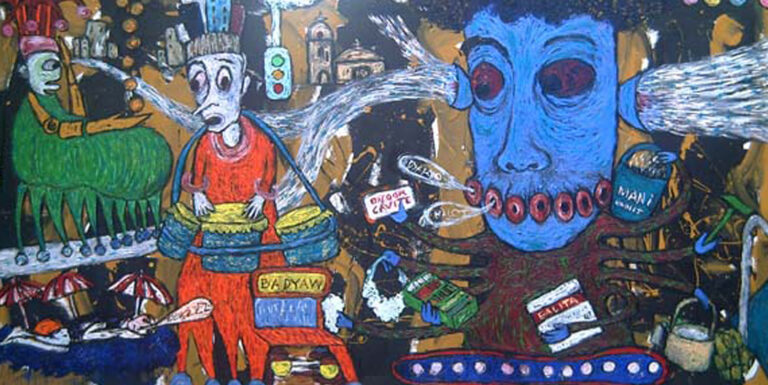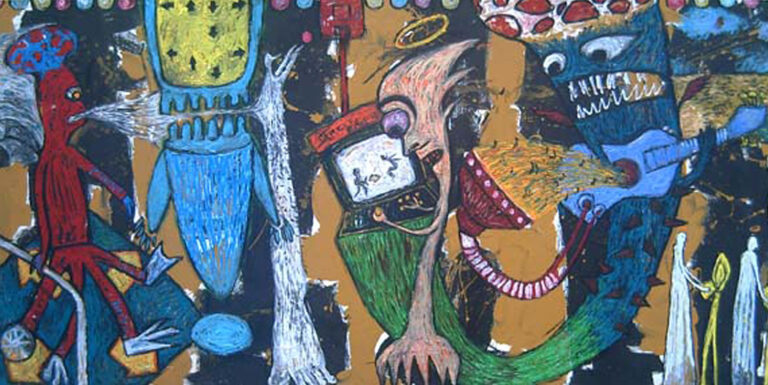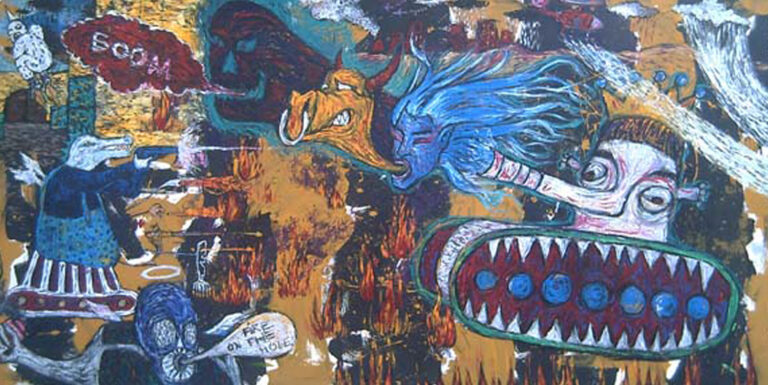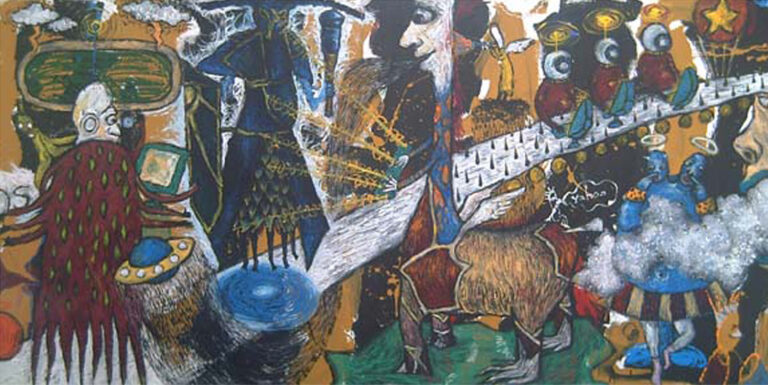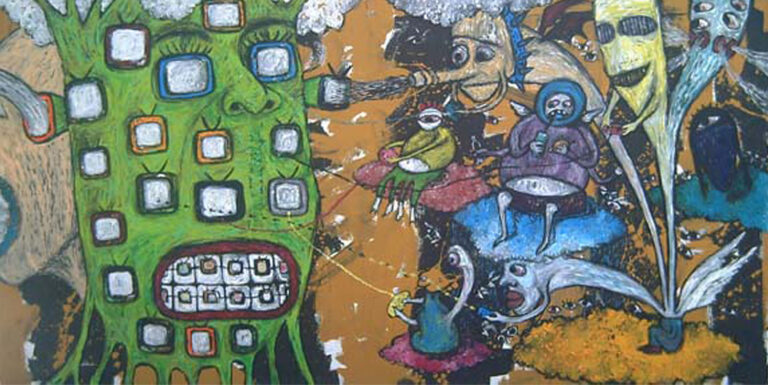Children's Playground
Notes on the Exhibition
Children’s Playground by Ryan Jara
There is no hint of innocence in the Children’s Playground created by Ryan Jara. In seven large-scale works of four-by-eight-foot paintings, the artist exorcises the evil phantasms of present-day childhood.
Gone are the days of local games using physical dexterity, homemade toys, creative imagination and the inexhaustible energy of youth: the artist notes that children seldom play outside nowadays, some stuck inside internet cafes and their homes, toying with technology that didn’t exist decades ago, while some creep in the shadowed street corners immersed in vices and addictions they are too young to fathom, much less control.
Playing jolens, tumbang preso and taya-tayaan used to excite the artist himself during his younger days, and this reflection on his past brings him to
dwell on the future — how different will the lives of future generations be when they themselves grow up? Will they be able to lead sane and balanced lives, knowing how exposed they are to today’s harsh truths of poverty and social degradation? How will they distinguish its disparity with the loud, violent and reality-bending worlds of artifice where they escape and
play their heroes / villains / fantasies?
There are street children in road junctions selling their wares, with a Badjao representing uprooted ethnic minorities peddling cultural entertainment while a boy slumbers peacefully in a makeshift sleeping cot under the watchful eye of a bloated, crab-like, presumed figure of authority juggling coins. Obese kids are perpetually connected to a multitude of television sets, with shades of sexual innuendo and animated violence. There are references to a popular video war game and reverberating visual explosions, online chatting and alien creatures with matching UFOs creating brainwashed minions via spiked conveyor belts, and of course, the tragic images of solvent-sniffing and smoking minors.
Children are portrayed at play in various scenarios, the figures themselves monstrous in form and almost inhuman. Stripped of the familiar rendition of flesh and bones, they appear as wraiths and mutants, enmeshed in the world they find themselves in. Having forms as varied as colorful creatures with multiple limbs to ghost-like shapes trying to take hold of objects that relate to everyday scenarios, they signify the flexibility of impressionable minds and their capacity to be molded into productive members of society.
That is, if we are not too late. These are children’s playgrounds we want our offspring to steer clear of. Rawness and grit echo the jagged lines of Jara’s paintings, showing the acid potency and destructive consequences of modern society’s vileness. By portraying this much darkness, the viewer is tasked to absorb, question and act, and maybe even create light, the kind that our children will feel safe to bask in.
Kaye O’Yek
December 2008

